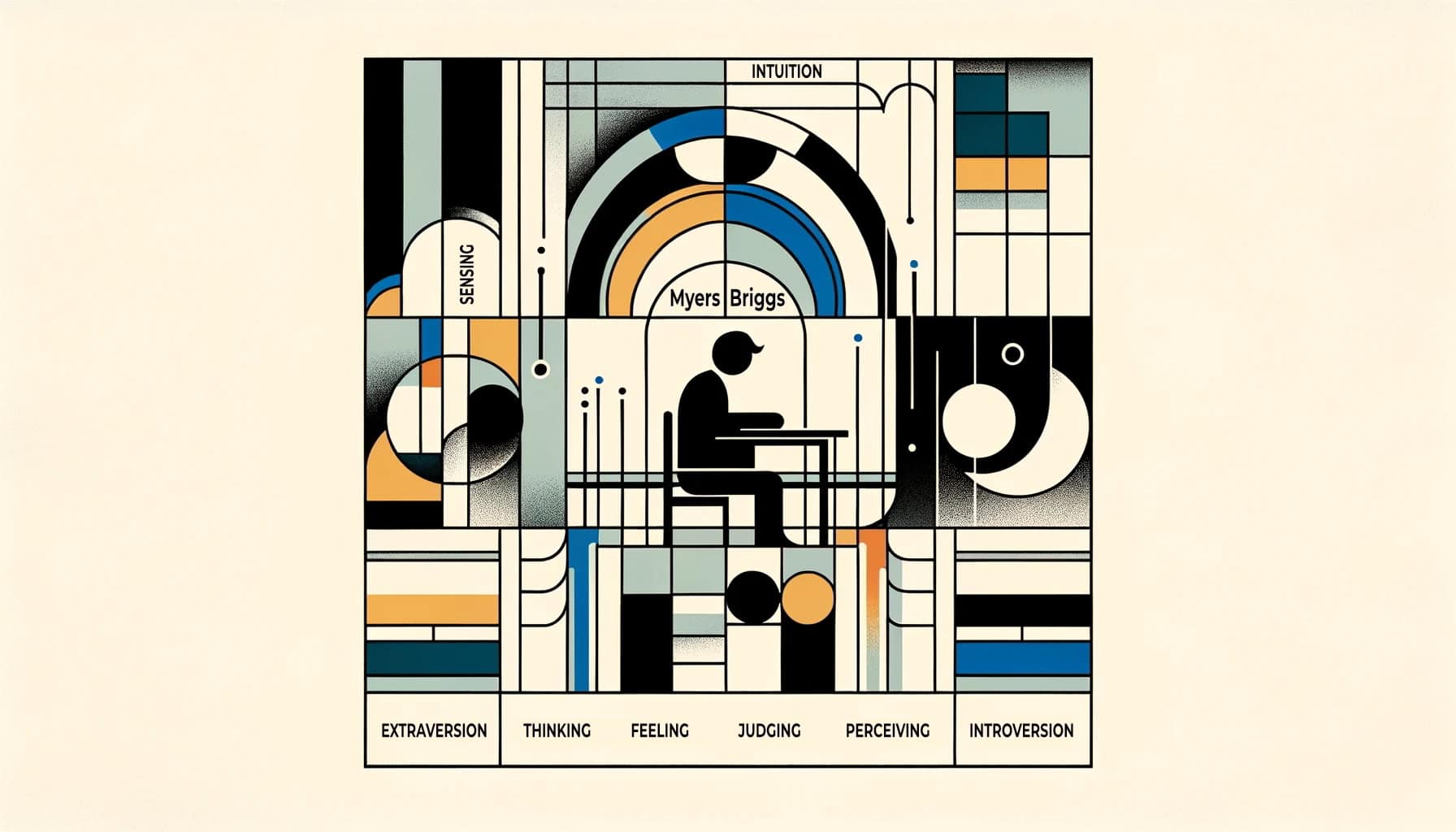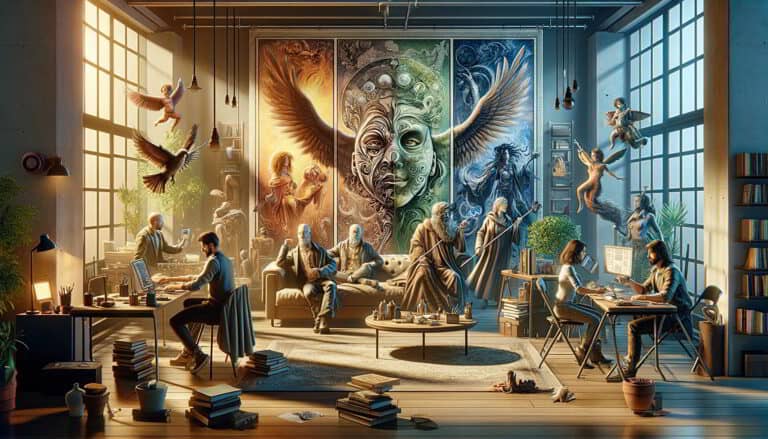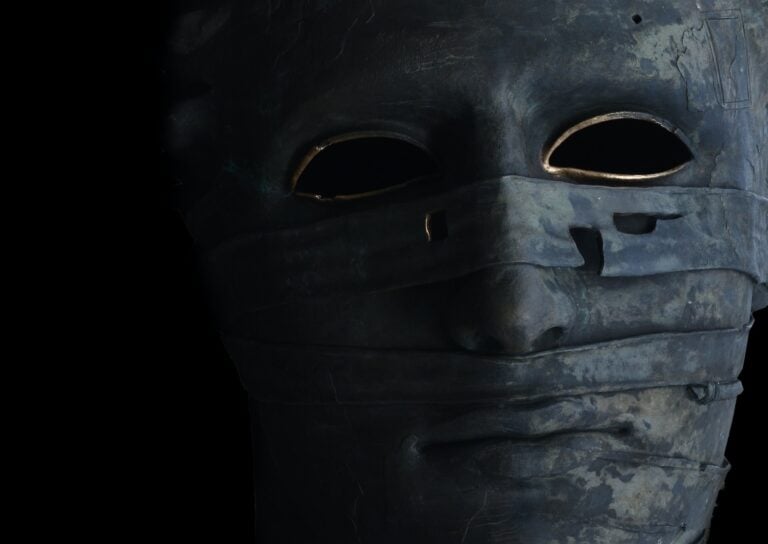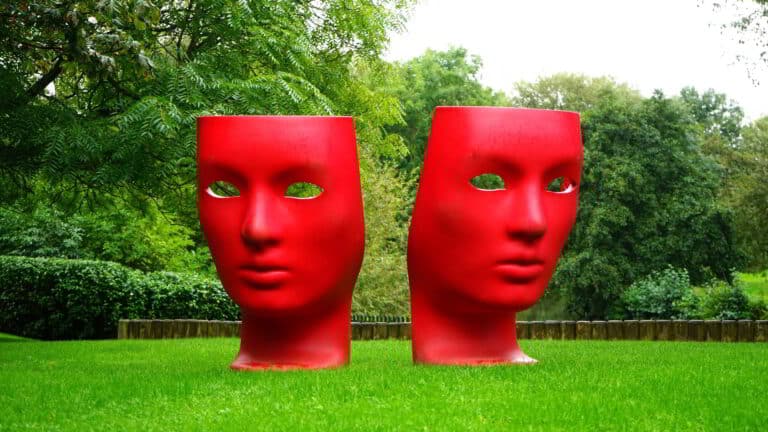Mastering Myers-Briggs: Character Building for Fiction Writers
Crafting compelling characters is an art. Learn how to utilize the Myers-Briggs Type Indicator to create complex, relatable, and dynamic personalities for your fictional universe.
Unleashing the Power of Myers-Briggs
Myers-Briggs Type Indicator (MBTI), a tool used extensively in psychology and professional development, can be an unexpected ally in the creative process. The MBTI, with its 16 personality types, offers a structured approach to character creation, providing insights into characters’ motivations, relationships, and development.
“Every individual is an exception to the rule.” – Carl Jung
Like Jung’s theories, the Myers-Briggs framework respects individual complexity. Your characters, like real people, can exhibit traits beyond a single MBTI type, adding depth and authenticity to their personas.

Diving Into the Four Dichotomies
The MBTI is built on four dichotomies: Extraversion (E) vs. Introversion (I), Sensing (S) vs. Intuition (N), Thinking (T) vs. Feeling (F), and Judging (J) vs. Perceiving (P). Understanding these dichotomies equips you with the necessary vocabulary to shape your characters.

Extraversion vs. Introversion
Characters on the extraversion end of the spectrum gain energy from social interaction. They are assertive, expressive, and action-oriented. Think Jay Gatsby from Fitzgerald’s “The Great Gatsby”.
Introverted characters, like Harper Lee’s Atticus Finch, prefer solitude to recharge. They are reflective, reserved, and often possess depth of thought.
Sensing vs. Intuition

Sensing characters are practical, detail-oriented, and live in the present. They are akin to Arthur Conan Doyle’s Sherlock Holmes, who uses tangible evidence to solve mysteries.
Intuitive characters lean towards abstract thinking, future possibilities, and are often imaginative. A classic example is Albus Dumbledore from J.K. Rowling’s “Harry Potter” series, known for his insightful foresight.
Thinking vs. Feeling
Thinking characters make decisions based on logic and objective analysis. They value truth over tact, like Mr. Darcy in Jane Austen’s “Pride and Prejudice”.
Feeling characters, on the other hand, consider emotions and values in their decision-making. They are empathetic and seek harmony, like Samwise Gamgee in Tolkien’s “Lord of the Rings”.

Judging vs. Perceiving
Judging characters like Hermione Granger from the “Harry Potter” series, prefer structure and order. They are decisive, organized, and value closure.
Perceiving characters, like Mark Twain’s Huckleberry Finn, are adaptable, spontaneous, and prefer keeping their options open.
The 16 Personality Types
Combining these dichotomies gives us the 16 personality types of the MBTI. Let’s delve into a few to see how they might manifest in your characters.

The Architect (INTJ)
The Architect, like Batman or Mr. Darcy, is independent, imaginative, and strategic. They enjoy intellectual challenges and strive for competence and knowledge.
The Mediator (INFP)
The Mediator, like Frodo Baggins or Anne Shirley, is idealistic, compassionate, and seeks harmony. They value authenticity and personal freedom.
Conclusion: Embracing the MBTI
**Utilizing the Myers-Briggs Type Indicator in character creation can bring a new level of depth to your storytelling.** Remember, these are not hard-and-fast rules but a guide to understanding the complexities of human personality. Allow your characters to break these molds, have unique quirks, and be full of surprises. The MBTI is a tool, not a constraint. It’s here to inspire, not restrict. After all, as Ernest Hemingway famously said, “We are all apprentices in a craft where no one ever becomes a master.”

FAQs
What is the Myers-Briggs Type Indicator (MBTI)?
Answer: The MBTI is a self-report questionnaire designed to identify a person’s personality type, strengths, and preferences. It’s based on Carl Jung’s theory of psychological types and consists of 16 personality types.
How can the MBTI help in character creation for fiction writers?
Answer: The MBTI provides a structured framework that helps writers understand their characters’ motivations, strengths, and weaknesses. This can lead to more believable, relatable, and well-rounded characters.
How flexible is the MBTI in character development?
Answer: While the MBTI provides a great starting point, it’s important to remember that characters, like real people, can exhibit traits from different personality types. Writers should feel free to deviate and create characters that challenge or combine these types.
Keywords: Myers-Briggs Type Indicator, MBTI, character creation, fiction writing, personality types, character development, storytelling.






